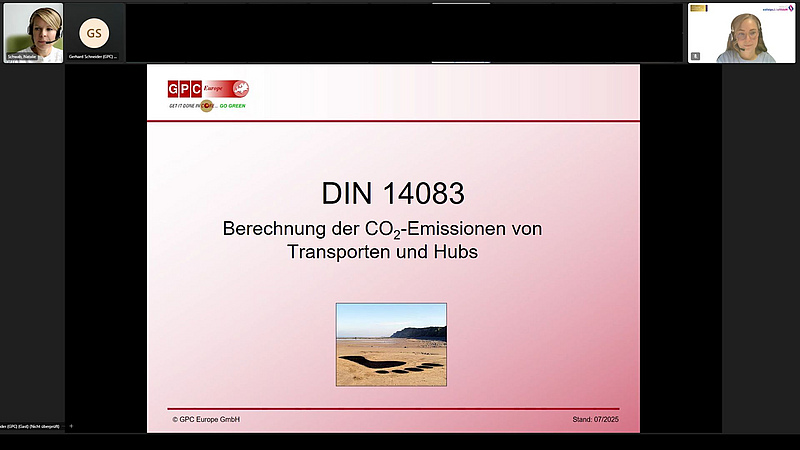The fourth part of our webinar series Transforming Transport on July 7, 2025, focused on CO2 reporting in transport logistics. This topic is becoming increasingly relevant in the field of transport logistics. With the monitoring requirements set by current EU regulations (CSRD, CountEmissionsEU), digital applications for recording direct and indirect greenhouse gas emissions are becoming increasingly important in order to create transparency along the supply chain for all stakeholders.
But how can transport logistics companies measure and monitor this data? In his presentation, Gerhard Schneider from GPC Europe GmbH demonstrated a uniform methodology for measuring, quantifying, and monitoring greenhouse gas emissions—a prerequisite for optimizing processes and initiating measures to reduce and avoid emissions. The ISO 14083 standard for quantifying and reporting greenhouse gas emissions from transport operations describes a methodology that freight forwarders and logistics companies can use to calculate and evaluate GHG emissions from global and regional supply chains using all modes of transport. This allows sustainability achievements to be published in a way that is comparable across companies. The globally uniform standard replaces the previously applicable European standard EN 16258.



